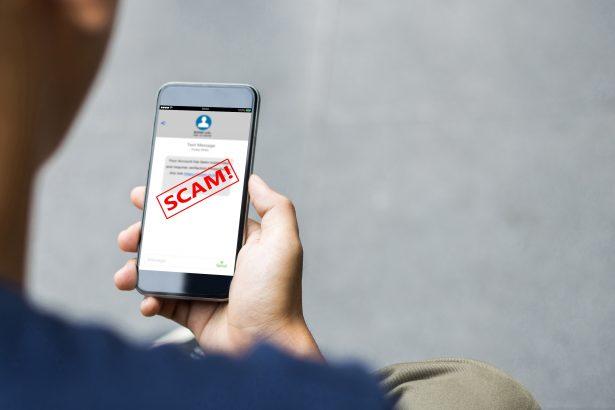Cybercriminals continuously evolve their tactics to deceive unsuspecting users, and phishing scams remain one of the most dangerous methods they use. The latest phishing email, titled “Avoid Getting Locked Out,” is designed to steal email credentials by tricking recipients into believing their account needs re-authentication due to a mail server update.
If you receive an email with this subject line, do not click any links or provide any personal information. This email is a scam and is not associated with any legitimate service provider. Instead, it is part of a phishing campaign designed to steal login credentials, which could lead to severe financial and privacy-related consequences.
What is the “Avoid Getting Locked Out” Email Scam?
The “Avoid Getting Locked Out” email scam claims to be a mandatory service communication that warns recipients they may lose access to their email accounts unless they re-authenticate. The email provides a fraudulent login page that captures user credentials, allowing cybercriminals to gain unauthorized access.
At the time of analysis, the phishing site linked in the email was inactive, but attackers may reactivate it or use alternative phishing pages in future versions of this scam.
Email Text
Subject: Ref: Avoid getting locked out – New Request for – Friday, March 7, 2025
Webmail
This is a mandatory service communication
Avoid Getting Locked Out
Due to a recent mail server update, we recommend you to re-authenticate to avoid getting locked out of your account.
[Re-authenticate Now]
Message ID: GIKIW-JS92JSN-E82-2MSMSMS
Email:
Date: Friday, March 7, 2025
This message from is an important communication
One Microsoft Way, Redmond, WA 98052 USA
How This Scam Works
The “Re-authenticate Now” button leads to a phishing website disguised as an email login page. Once users enter their credentials, attackers can:
- Gain full access to email accounts
- Steal personal and financial information
- Use compromised emails to spread malware or scams
- Hijack online accounts linked to the compromised email
- Perform fraudulent transactions or identity theft
Threat Summary Table
| Category | Details |
|---|---|
| Threat Name | “Avoid Getting Locked Out” Phishing Email |
| Threat Type | Phishing, Scam, Social Engineering, Fraud |
| Fake Claim | User must re-authenticate their email to avoid being locked out |
| Symptoms | Unauthorized transactions, changed passwords, identity theft, access to sensitive accounts |
| Detection Names | Phishing.EmailScam, Fraudulent.Email.Login, Email.Spoofing |
| Damage | Loss of credentials, financial loss, identity theft, access to email contacts |
| Distribution Methods | Deceptive emails, phishing links, spoofed official messages |
| Danger Level | High – Can lead to account compromise, identity theft, and financial fraud |
Why This Scam is Dangerous
Phishing emails like “Avoid Getting Locked Out” are particularly dangerous because they appear legitimate. They often:
- Use official-looking branding and formatting
- Contain urgent messaging to pressure users into acting quickly
- Link to fraudulent login pages that steal credentials
- May bypass spam filters and reach users’ inboxes
Since email accounts store personal, financial, and professional communications, losing access to one can result in severe consequences, including:
- Identity theft
- Unauthorized access to social media, banking, or work accounts
- Malware distribution using compromised contacts
How to Manually Identify and Remove Email Scams
Manually removing email scams involves recognizing fraudulent messages, securing your accounts, and taking precautions to prevent future attacks. Follow these steps:
Step 1: Identify Suspicious Emails
Before taking action, you need to identify scam emails. Common signs include:
- Unknown Sender: Emails from unfamiliar addresses, especially if they claim to be from banks, tech support, or government agencies.
- Urgency or Threats: Scammers often pressure you to act immediately (e.g., “Your account will be closed in 24 hours!”).
- Poor Grammar & Spelling: Many scam emails contain obvious grammatical mistakes.
- Suspicious Links & Attachments: Hover over links (without clicking) to check the actual URL. If it looks odd, don’t click.
- Requests for Personal Information: Legitimate companies will never ask for passwords, Social Security numbers, or credit card details via email.
Step 2: Do Not Click Links or Download Attachments
If you suspect an email is a scam:
- Do not click on any links.
- Do not open any attachments.
- Do not reply to the sender.
Step 3: Report the Email Scam
You can report the scam email to various authorities:
- Gmail/Outlook/Yahoo Users: Click the “Report Phishing” or “Report Spam” button in your email client.
- FTC (Federal Trade Commission, USA): Report to FTC Complaint Assistant.
- Google Safe Browsing: If the scam email contains a phishing website, report it here.
Step 4: Block the Sender
- Gmail: Open the email, click the three dots in the top-right corner, and select “Block [Sender Name]”.
- Outlook: Open the email, select “Junk” > “Block Sender”.
- Yahoo Mail: Open the email, click “More” > “Block Sender”.
Step 5: Check Your Accounts for Unauthorized Activity
If you accidentally clicked a link or shared sensitive information:
- Change your passwords immediately. Use strong, unique passwords for every account.
- Enable two-factor authentication (2FA). This adds an extra layer of security to your accounts.
- Check your banking statements for unauthorized transactions.
Step 6: Scan Your Device for Malware
Some email scams contain malware hidden in attachments or malicious links. Run a full system scan using built-in tools:
- Windows Defender (Windows 10/11):
- Go to Settings > Update & Security > Windows Security > Virus & Threat Protection.
- Click “Quick Scan” or “Full Scan”.
- Mac Users:
- Use Malwarebytes for Mac or another security tool.
Step 7: Adjust Your Email Security Settings
- Enable email filtering to reduce spam and phishing emails.
- Add a third-party spam filter such as Mailwasher or Spamihilator.
- Educate yourself and others on phishing techniques to avoid future scams.
How to Remove Email Scams Using SpyHunter (Automated Method)
For users who prefer an automated, foolproof method to remove threats linked to email scams, SpyHunter offers an advanced security solution. SpyHunter is an anti-malware tool designed to detect and remove phishing-related threats, spyware, Trojans, and other cyber threats. Follow these steps:
Step 1: Download SpyHunter
- Visit the official SpyHunter download page: Download SpyHunter
- Click on “Download” and save the installation file to your computer.
Step 2: Install SpyHunter
- Locate the downloaded file (SpyHunter-Installer.exe) and double-click to open it.
- Follow the on-screen installation instructions.
- After installation, launch SpyHunter.
Step 3: Perform a Full System Scan
- Open SpyHunter and navigate to “Malware/PC Scan”.
- Click “Start Scan Now” to begin a deep scan of your system.
- SpyHunter will analyze files, registry entries, and processes for any threats linked to email scams, phishing, and malware.
Step 4: Review and Remove Detected Threats
- Once the scan completes, SpyHunter will list all detected threats.
- Click "Fix Threats" to remove them.
- Restart your computer to complete the removal process.
Step 5: Enable Real-Time Protection
SpyHunter includes real-time protection features to help prevent future infections:
- Enable Active Guards: This monitors your system for malware in real time.
- Schedule Automatic Scans: Set up periodic scans to detect new threats early.
Step 6: Keep SpyHunter Updated
- Regularly check for updates to ensure SpyHunter detects the latest threats.
- To update SpyHunter, open the app and go to "Settings" > "Update", then click "Check for Updates".
Preventing Future Email Scams
Now that you've removed email scams, take proactive steps to prevent them in the future:
Use a Secure Email Provider
- Consider switching to a secure email provider like ProtonMail or Tutanota, which offer advanced encryption.
Be Cautious with Email Links
- If you receive an email with a suspicious link, verify the website’s legitimacy before clicking.
Avoid Public Wi-Fi for Sensitive Activities
- Scammers can use public Wi-Fi to intercept your data. Use a VPN when accessing email on public networks.
Regularly Change Your Passwords
- Update your passwords every few months, and never reuse old passwords.
Use Anti-Phishing Extensions
- Install browser extensions like Bitdefender TrafficLight or Avast Online Security to detect phishing links in real-time.
Email scams are a serious cyber threat that can lead to financial loss, identity theft, or malware infections. By following the manual removal steps, you can effectively identify and remove suspicious emails on your own. However, for advanced protection, using SpyHunter ensures a more thorough and automated approach to detecting and removing phishing-related threats.
Recommended Action
For a fast and efficient way to remove email scams and related malware, download and install SpyHunter now: Download SpyHunter
By staying informed and proactive, you can protect yourself from future email scams and online threats!
Conclusion
By understanding how phishing scams like "Avoid Getting Locked Out" operate, users can stay vigilant and protect their online security. Always verify suspicious emails before clicking on any links or providing sensitive information.




